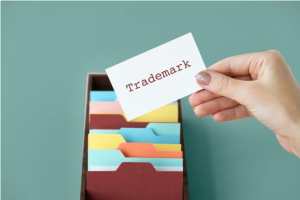 In an interim application filed by Pidilite Industries Ltd. (“plaintiff”), the plaintiff is seeking a temporary injunction to prevent Dubond Products India Pvt. Ltd. (“defendant”) from infringing the plaintiff’s registered trademarks LW and LW+. The Bombay High Court, in this order dated May 21, 2024, granted relief to the plaintiff.
In an interim application filed by Pidilite Industries Ltd. (“plaintiff”), the plaintiff is seeking a temporary injunction to prevent Dubond Products India Pvt. Ltd. (“defendant”) from infringing the plaintiff’s registered trademarks LW and LW+. The Bombay High Court, in this order dated May 21, 2024, granted relief to the plaintiff.
The plaintiff approached the court claiming that the mark DR. FIXIT was honestly and independently conceived and adopted by the plaintiffs in 2001. One of the oldest products within the umbrella of DR. FIXIT marks is sold under the registered marks LW and LW+.
The plaintiffs contended that the defendant has not only mimicked their unique design, distinctive layout and original label but has also copied the colour scheme of blue and yellow, and grey bottles thereof, which is identified by the public at large and is enough to cause confusion in the minds of the public. The plaintiff also said that labourers, construction workers and illiterate consumers rely upon the trade dress, including the colour scheme of the product; thus, any colourable imitation thereof by any person is bound to cause confusion in the minds of the public, retailers, dealers and consumers. The plaintiff relied on comparing the rival products and features, comparing the actual similarities between the plaintiff’s product and the defendants.
On the other hand, the defendant’s counsel claimed that the defendant presented letters from various stockists and distributors stating that there hasn’t been any confusion caused by the alleged similarity in their products. He also asserted that the plaintiff hadn’t provided any evidence of actual confusion. Therefore, the plaintiff’s concerns are unfounded and lacking in merit. The defendant’s counsel also argued that since the plaintiff didn’t oppose the trademark registration for HYDROBUILD LW, which was granted on July 5, 2018, the defendant should be considered the rightful owner of both HYDROBUILD and HYDROBUILD LW trademarks. He also stated that HYDROBUILD LW has been used continuously and uninterruptedly since 2009.
Therefore, there is no likelihood of any confusion between HYDROBUILD LW and the Plaintiff’s LW+ mark. He further argued that the plaintiff’s trademark registration for “PIDIPROOF LW” in 1996 explicitly stated that it wouldn’t grant exclusivity over the letters “LW”, which means the plaintiff cannot claim exclusive rights over “LW” alone. He emphasises that the plaintiff has only used “PIDIPROOF LW” since 2000, not just “LW” on its own. “LW” stands for liquid waterproofing, and any use of it should be viewed in the context of this disclaimer. Even if the trademarks in question are deemed similar, they could be seen as coexisting peacefully.
The court noted that the defendant’s application for registration of the marks “HYDROBUILD LW” and “HYDROBUILD LW POWER” were filed after the plaintiff had been using the “LW” mark for some time. It determined that the defendant’s use of “LW” with their marks would likely infringe upon the plaintiff’s trademark rights, especially considering the similarity of the goods. The court emphasised that slight variations in appearance or colour placement didn’t negate infringement. It also found that the defendant’s intention to deceive or confuse the public was evident, citing established legal precedent that the likelihood of confusion was enough for an infringement claim, not necessarily actual instances of confusion.
The court noted inconsistencies in the defendant’s claim of prior use of “HYDROBUILD LW POWER”. It concluded that there was a clear likelihood of confusion among consumers, ruling in favour of the plaintiff. Further, had the marks HYDROBUILD LW or HYDROBUILD LW POWER been in use since 2009, there would have been no reason for the defendant to make an application for HYDROBUILD in 2010 on a “proposed to be used basis”.
The court also found an inconsistency between the user of the mark HYDROBUILD and HYDROBUILD LW POWER, which is alleged to have been used since 2009. Hence, the court prima facie found the marks to be similar, and there is the likelihood of confusion among the public at large and class of consumers. Considering the findings, the court rejected the application for a stay of the said judgment, which sought a temporary injunction to prevent the unauthorised usage of the plaintiff’s registered trademarks LW and LW+.
Authors: Manisha Singh and Malyashree Sridharan
First Published by: Lexology here



